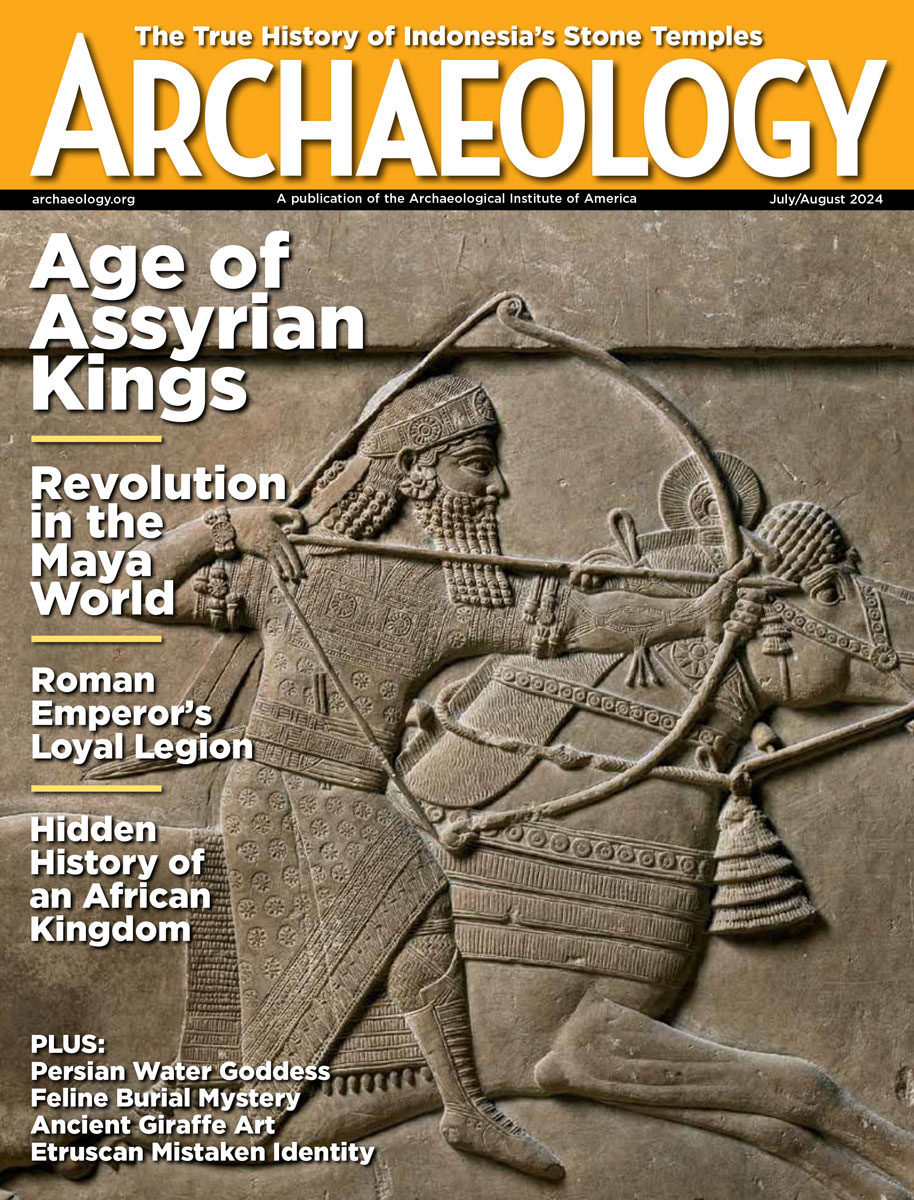Thursday, June 5
June 5, 2008
A bone arrow point found in a cave in South Africa dates to 60,000 years ago, pushing back the origins of bow-and-arrow technology by 20,000 years, according to Lucinda Backwell of the Bernard Price Institute for Palaeontological Research, Lyn Wadley of Wits University and the Institute for Human Evolution, and Francesco d’Errico of the University of Bordeaux, who published their discovery in the Journal of Archaeological Science. Two other bone tools from the site may have been used to work leather.
Three mutilated, partial skeletons were found at the 4,000-year-old site of Bandurria in the Andes Mountains of Peru. “The find of individuals, evidently sacrifice victims, at Bandurria is significant, because there is not currently evidence of human sacrifice or warfare during the Pre-Ceramic [period],” commented Winifred Creamer of Northern Illinois University. Â
Head of Egypt’s Supreme Council of Antiquities Zahi Hawas has re-excavated the so-called Headless Pyramid. Blocks from the top of the pyramid were probably removed long ago to build houses. “Now we are sure that this pyramid is of a style of a pyramid of Dynasty V and belongs to a king called Menkauhor,” he told reporters.  Â
The Association of Art Museum Directors has issued new guidelines for buying antiquities for museum collections.  Â
Field school students are digging at the site of an early nineteenth-century cabin and late nineteenth-century mansion owned by the Boxely family in Sheridan, Indiana. “We’ve found ceramics, crockery, pharmaceutical bottles and doorknobs. Finding a whole bottle, intact, is a red-letter day for us,” said Chris Glidden, the archaeological lab director at Indiana University. Â
Remnants of a British fort dating to the Revolutionary War and American Indian artifacts are among the discoveries holding up the construction of a casino along Philadelphia’s waterfront. “This area clearly has a history as old and buried and as important as the history of any other part of Philadelphia,” said Daniel K. Richter of the University of Pennsylvania.  Â
Experts are trying to identify the remains of two people who had been buried together in the early twentieth century. Their bones, coffin fragments, and bits of clothing were uncovered at a construction site in Washington State.
- Comments Off on Thursday, June 5









